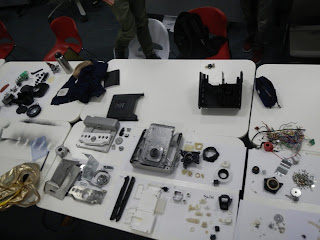The product we teared down, a coffee maker, was manufactured in China. Through out the whole life cycle, the use of the product generated most impact on environment in terms of energy use and water usage. In the long term use such as more than ten years, the coffee maker use electricity and water to produce coffee every day, compared to the short period of manufacture, this phase of life cycle don't need any more material supplements. Hence, to make this coffee maker more green, one should focus more on the way of coffee making, trying on reducing the energy consumption when heating and grounding coffee. In this case, increasing the efficiency of heating and grounding would become the main issue that need to be solved.
However, there is a another problem of this coffee maker. The material usage of the coffee maker can be cut down a little such as the decoration shield outside out of aluminum..etc. as it is still quite a heavy product. Cutting down the material usage not only helps in reducing energy consumption in the phase of manufacture but also help losing weight. Given the consideration on the distant transportation from China to Australia, lower weight and smaller volume will give much help in cutting down the fuel consumption and further the CO2 emission.
In short, products like coffee maker usually lasts really long in daily run and their is not always a need of replacement unless it breaks. Hence, for designers, personally, I think what we can do is trying to use less material as possible. And for users, One should really care more on their coffee maker in order to expand its life.






























